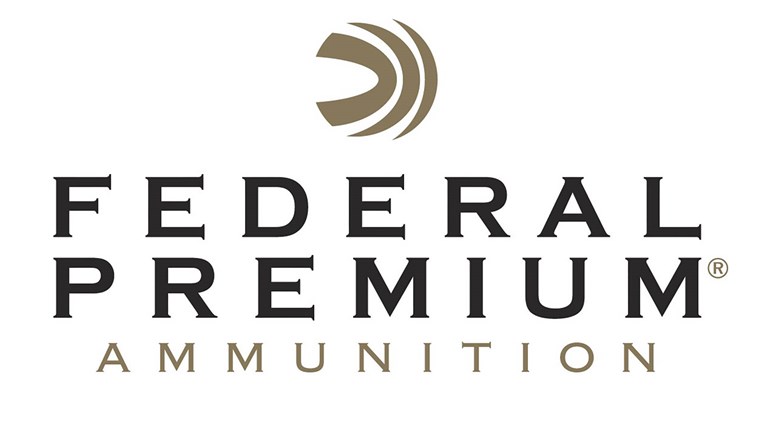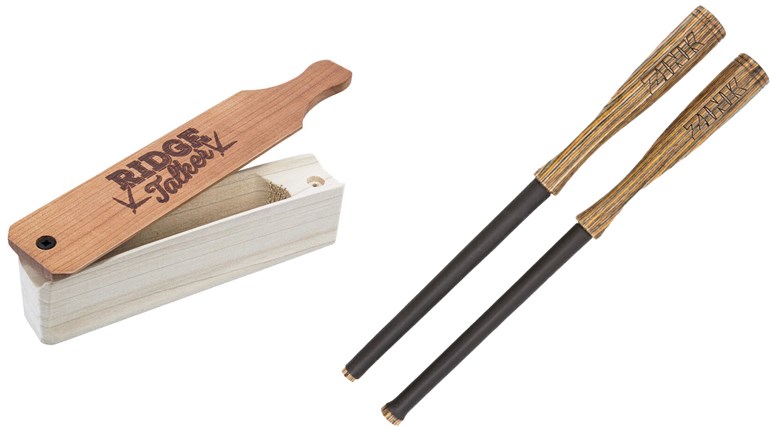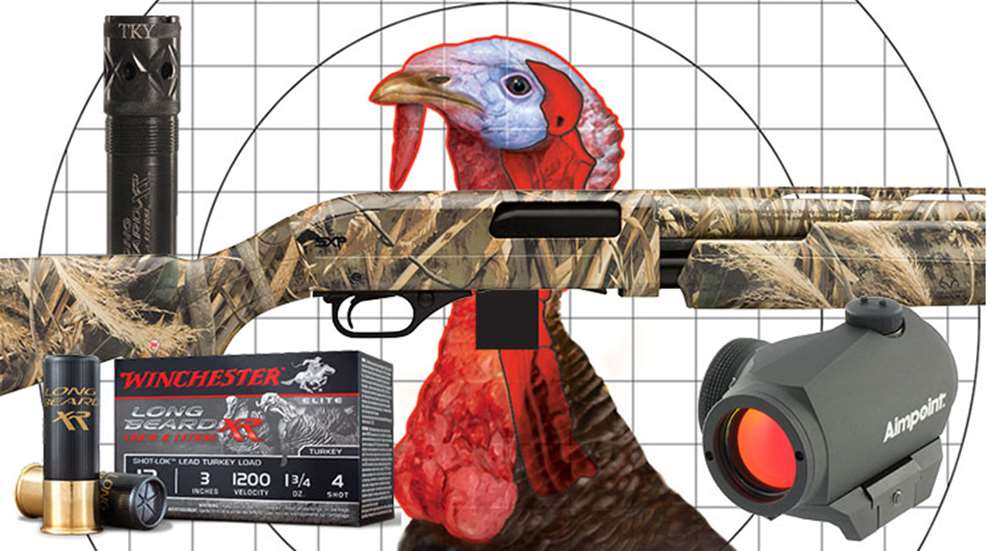
In an ideal world, responding gobblers would merrily stroll into your dekes on every setup. It’s not utopia, though, and they’re just as likely to linger outside of “normal” shotgun range, taunting you. Few things are as depressing. Beyond melancholy, with free time being limited for most hunters, every opportunity counts; in fact, you might earn but one break this season to bag a bird. To make the most of it, you need to leave behind preconceived limitations and be prepared to stretch the distance with your scattergun. Below are several easy ways to do just that.
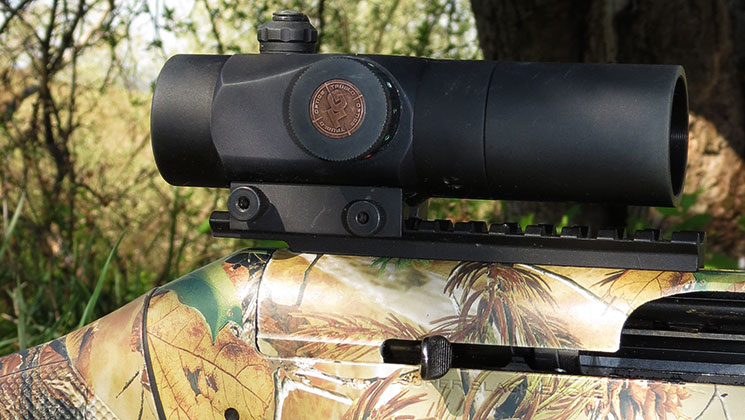
1. Beads Are For Necklaces
Provided that they’re installed correctly—some are mounted off-center, especially on inexpensive, foreign-made shotguns—bead sights are adequate for rapid shots at birds on the wing, where, more often than not, the ever-expanding periphery of the pattern (not the dense core) brings the bird to bag. Think point and shoot.
On the contrary, except for the “Hail Mary” follow-up shot to a floundered first, it’s the consistently accurate delivery of the shot pattern’s amassed core that’s critical for downing toms at beyond-normal distances. Truthfully, the bead sight is woefully insufficient for this task. Here’s why: due to variances in stock geometry and physical stature (and thus fit), as well as slight shifts in cheek weld, it’s difficult to precisely place a pattern using a bead sight. The former can be improved through the use of stock shims. What cannot be remedied as easily, though, is bead size. Obnoxiously large fiber-optic sights are especially problematic. As the distance increases, the bead will cover larger portions of the “kill zone,” and then even the entire turkey. You cannot accurately place a shot on a target you cannot see. For the abovementioned reasons, I prefer the use of a red-dot or reflex-style sight or scope.
Each shotshell is a destructive test and cannot be replicated exactly; however, using an optic enables you to closely align the pattern’s center with the illuminated dot or crosshair, thereby boosting the chances of bringing the bulk of the pellets to the turkey’s unprotected head and neck. This becomes more important as distance increases. An optic also enables you to easily compensate for drop; pellets don’t defy gravity.
Having used rifle- and shotgun-specific scopes, as well as reflex-style sights and red-dots, I prefer the latter. In addition to being smaller, lighter and less prone to snag, the units offer both-eyes-open sighting for rapid target acquisition. Too, if a silent, detouring tom skulks into the dekes and you cannot achieve perfect cheek weld, you’re still in the game; wherever that red dot covers is set to receive the brunt of the payload. More than once this quality has saved my hunt.
Regardless of the optic you choose, be aware that the front lens (i.e. objective) can produce a reflection that’s visible by a turkey. If possible, sit in the shadows or drape a small cover it that can be slid off effortlessly when the shot is to be taken. Also, if your optic is battery operated, change them before the season, check them frequently, and carry spares in your turkey vest. That is, unless you’re using an Aimpoint, which has a battery life of 50,000 hours. My all-time favorite is the Aimpoint Micro H-1. Remember, buy the best optic that you can afford.
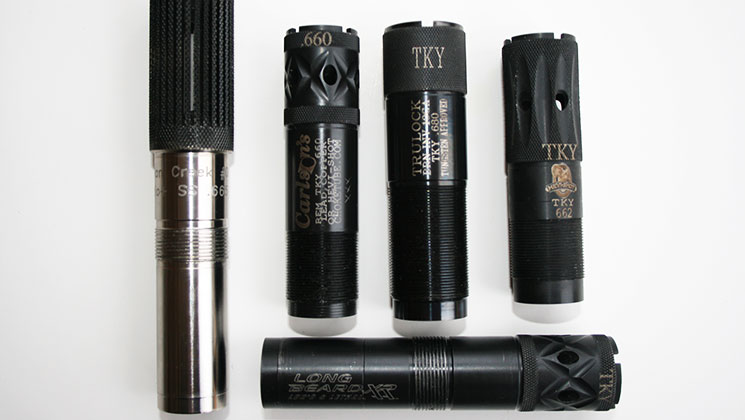
2. All Choked Up
Selecting a choke tube from the myriad makes available that’ll maximize the lethal range of your shotgun can be an exercise in frustration, as well as a drain to your bank account. At times, good results can be found using low-cost models sold at big-box stores—especially if coupled with lead loads. But, top performance comes at a price. Case in point: a glance at the recent NWTF Wild Turkey Still Target World Championship standings highlights two companies—Indian Creek and JEBS. Year in and year out the duo dominate the field. Selling for upward of $110 each, these choke tubes aren’t inexpensive; however, what’s your time afield truly worth? To help alleviate the sting to tight purse strings, stock up on clearance Indian Creek products after turkey season ends. Smart shopping at MidwayUSA last year led to me scoring Indian Creek Black Diamond Strike tubes for less than $30 each.
If the abovementioned products are out of your budget, try a turkey choke from Carlson’s, HEVI-Shot or Trulock. For the price, you’re going to get stellar performance; in fact, you might even find that it’s unnecessary to upgrade. For example, last season my son used a Benelli SBE 2 equipped with a ported, Carlson’s .665 Longbeard XR choke tube and Winchester 3½-inch, 2-oz., No. 4 Longbeard XR shells to take an extra-large Virginia tom at 54 yds. I did the same at 35 yards, and the previous year I employed an extended .680 Trulock turkey choke tube in a Browning Gold Light 10 gauge to take a gobbler at such a distance that won’t be mentioned here. The bird didn’t so much as flap once when hit by a large swath of the 2-oz. payload of No. 7s from the 3½-inch Federal Premium Mag-Shok Heavyweight Turkey load. Chokes from the abovementioned companies are excellent starting points for improved performance.
When choosing a choke tube, opt for one that’s extended (for a more gradual constriction of the shot) and that can handle all modern turkey loads—especially leadless. Porting depends on personal preference. Concerning constriction, in 12 gauge .665 has proven to work well for me across a wide range of turkey loads, though .640 to .670 are often available. Twenty gauge runs from .555 to .580. One choke tube will stand out with your gun/ammunition combination, but only through patterning at distance will you find it. Lastly, frequently clean your choke tube with a plastic/fouling solvent and brush to remove performance-degrading deposits.
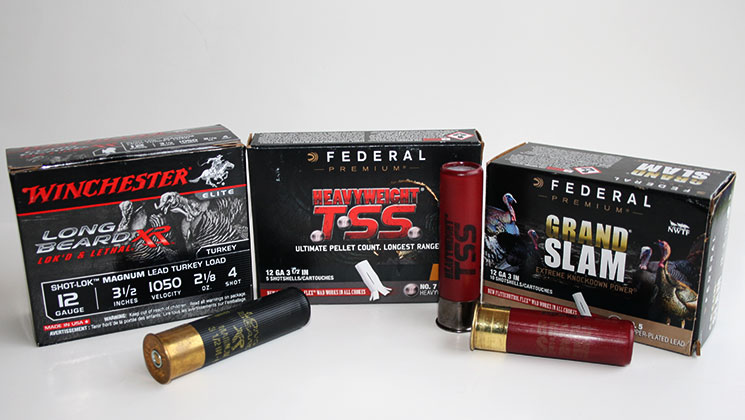
3. Pappy’s Shells Just Won’t Cut It
Truthfully, nigh every turkey-specific lead shotshell will down a gobbler at 40 yards. No surprise, there. Beyond that distance, however, the performance of generic loads diminishes rapidly. We’re not stopping at 40 yards, either; that’s merely the starting point. Reaching past that traditionally viewed cutoff requires a transition in ammunition—gone is the run-of-the-mill loads. Shells featuring nickel- or copper-plated lead shot can still be quite effective even beyond 50 yards, but they need an improved delivery system to do so. Winchester’s Longbeard XR, for example, uses Shot-Lok technology to maintain pellet roundness for tight patterns at distance and deeper penetration. Meanwhile, in its Grand Slam loads, Federal Premium surrounds its pellets with buffering and loads them in its new and improved FliteControl Flex wad, which is less choke sensitive.
For maximum reach, you’ll need to transition from lead to tungsten-based shot. Boasting an improved density over lead, tungsten-based shot maintains lethal energy further and penetrates deeper. Need proof? I’ve had payloads of No. 8½ T.S.S. penetrate both sides of a soup can at 40 yards. Try that with lead. Moreover, their hardness prevents deforming during setback, while traversing the bore, and through constriction, resulting in very tight patterns.
Within this category, density varies greatly. Available as a handloading component, ITX-13 has a target density of 13 g/cc, while SpheroTungsten runs 15 g/cc. It’s also a handloading proposition. HEVI-Shot loads its HEVI-13, which has a density of 13 g/cc, as well as a blend of No. 5, 6, and 7 in Magnum Blend. Tungsten Super Shot (T.S.S.) is the Holy Grail of tungsten-based shot; with a density of 18 to 18.1 g/cc, T.S.S. has the ability to down gobblers at previously unimaginable distances. At around 1.3 grs. each, No. 9 T.S.S. has a similar weight as nickel-plated lead No. 7½, and No. 8 ½ T.S.S. pellets are only about 0.3 gr. less than No. 6 lead. Lastly, No. 7 T.S.S. weighs the same as magnum lead No. 5s. Tungsten Super Shot is a game changer—especially for sub bores.
Federal Premium began offering this innovative shot in its Heavyweight T.S.S. line this year, and it’s available in .410 (yes, you read that correctly), 20- and 12-gauge. Though costly (about $5 to $9.50 each), it’s well worth the price for that one shot at a gawking gobbler. Apex Ammunition also loads T.S.S., but you’ll pay more than $11 each for some of the 12-gauge offerings. While Federal loads No. 7 and 9 T.S.S., Apex uses 7½, 8 and 9. As regulations vary greatly, when selecting a shot size, be sure that it’s legal for use in the state you’ll be hunting.
To maximize the reach of your shotgun, select the largest shell that it’s chambered for. For example, it your shotgun is chambered for 12-gauge 3½-inch shells, use that option over 3- or 2¾-inch shells. While perceived recoil will be greater, you’ll be delivering more pellets with every shot, thereby increasing lethality. Patterns are usually better, too. Whether you choose high velocity or heavier payload is totally up to you. Opinions about such differ greatly.
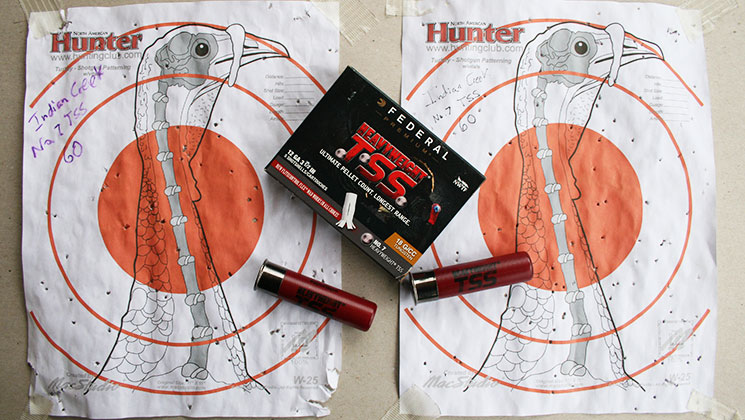
4. Proof Through Patterning
With your favorite shotgun topped with an optic and a new choke tube screwed into place, it’s time to head to the range. First, you’ll need to zero the gun; typically, I start at 10 to 15 yards and then fine tune it back to 30 or 40 yards. The distance at which it’s sighted in is your preference. The idea is to sync the aiming point with the densest portion of the pattern. Bargain-priced loads are good for the initial shots, but transition to those you’ll be using. To capture the full pattern, I use discount wrapping paper purchased after the holiday season for $0.10 to $0.25 per roll.
Next, you’ll start the actual patterning process. Affixing a turkey silhouette target (PDFs can be found online to print your own at home for free) in the center of the wrapping paper, I begin shooting the premium loads at 40 yards. Three shells are expended at each distance—that is, unless the target is absolutely saturated with pellets. Moving rearward in five-yard increments, continue the process until there’s inadequate pellet distribution in a 10-inch circle surrounding the point of aim to ensure a clean kill. Many ardent turkey hunters decry anything but 100 pellets within that circle; however, I feel that 10 to 15 hits in the kill zone every time is acceptable.
At some distance, you’ll find that the pattern is no longer capable of assuring a kill; do not engage a gobbler at this range. Rather, shave off five yards. That’ll be your maximum effective range. If you want to increase upon said distance, you’ll need to begin the patterning process again using a new choke and/or shotshell. If it seems tedious, it is; but, when a long beard hangs up and you can kill it anyway, the ends justify the means. I do recommend carrying a rangefinder when hunting, as it’ll enable you to identify distances before a gobbler appears, so you know where (and when) a shot can be taken.
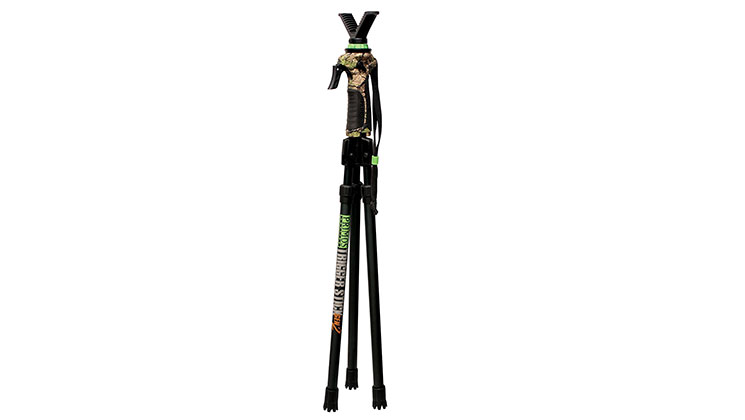
5. Take a Rest
Often overlooked, a rest for your turkey gun can make or break a hunt. Besides reducing fatigue, which can have you lower the gun at the most inopportune time, a rest (or support) allows you concentrate on a clean trigger pull. Remember, shooting a turkey at longer ranges is more like shooting a rifle than a shotgun; you need to hold the gun steady and execute a consistent trigger pull. Jerk the trigger and the pattern fringe is all that’s likely to hit the bird, possibly crippling it. I always carry a lightweight, foldable set of Stoney Point shooting sticks that easily stow in my turkey vest. Though less easily transported, Primos’ Gen 2 Trigger Sticks or Pole Cat Shooting Sticks work well, too. Regardless of what you select, always have them with you.
Though it can be costly, increasing the effective range of your treasured turkey gun isn’t a tedious task; rather, it’s simply fitting together all the pieces of the puzzle correctly. Once you do, you’ll have a masterpiece that’ll drop toms both near and far.












